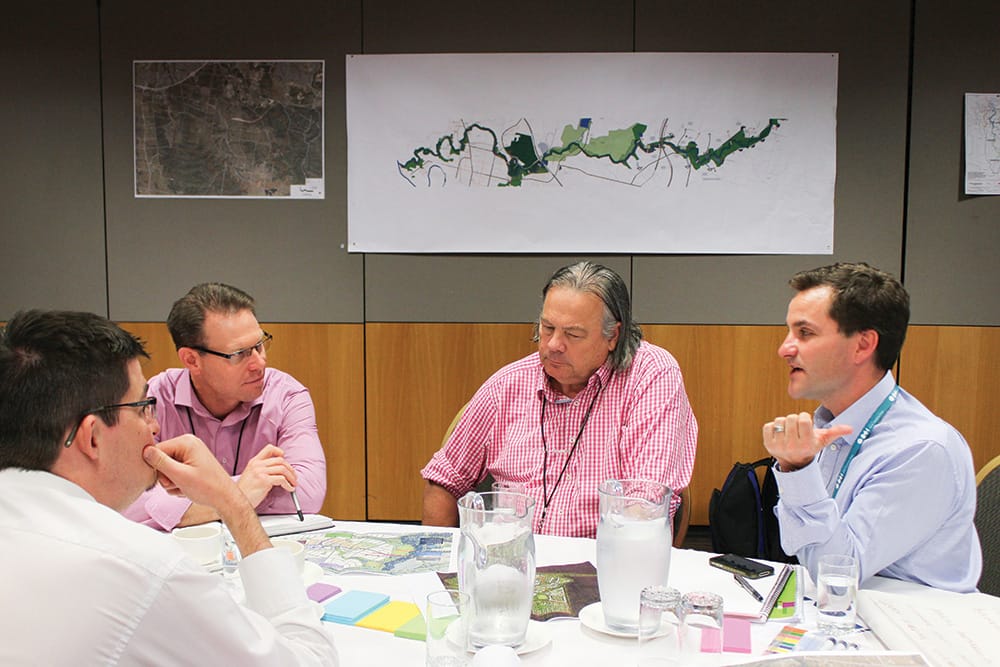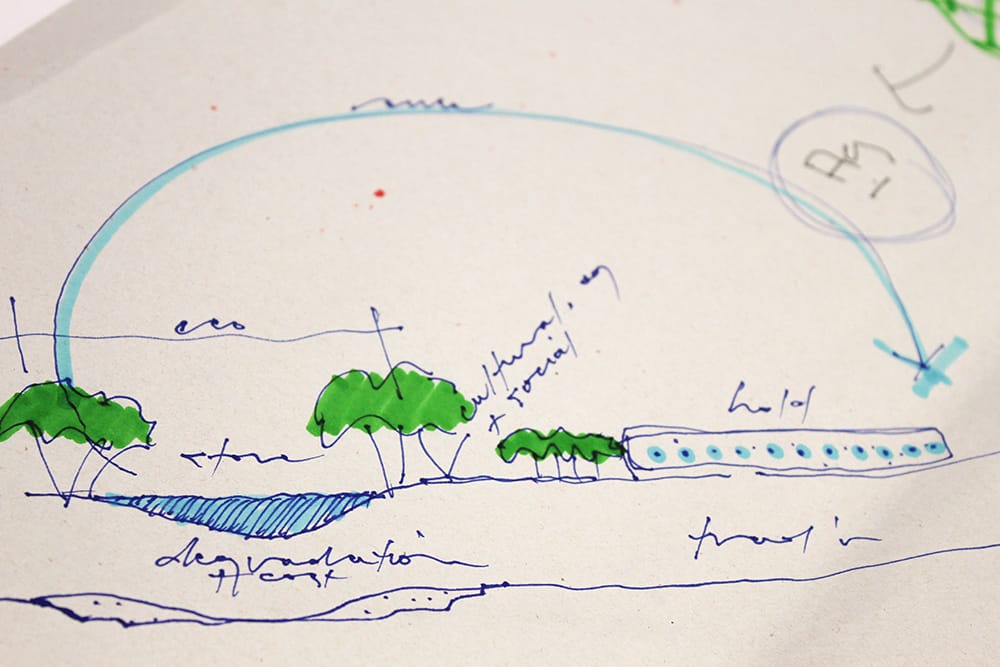Feature Article: From ideas to reality – lessons from Ripley Valley
Opportunities to test research come in sizes both big and small. In the case of Ripley Valley in Queensland, the size was definitely big. At more than 4500 ha, this greenfield urban development struck industry partners of the CRC for Water Sensitive Cities (CRCWSC) as an ideal case study. How to capture such an opportunity? A development this large lets researchers rise above the configuration of individual infrastructure elements, to explore ways of reimagining the urban water cycle for fundamentally new outcomes.

The CRCWSC research synthesis project Ideas for Ripley Valley explores this opportunity and provides fascinating ways forward. Like other case studies in the Research Synthesis portfolio and the “Ideas” series it is based on synthesising insights from the CRCWSC’s 35 different projects spanning four program areas into specific solutions for a given site. This focused approach shortens the pathway from research to adoption, by testing the emerging insights and tools of the CRCWSC in specific, real-world contexts in collaboration with industry.
Industry partners provide the challenges
Ideas for Ripley Valley was developed through a two-day workshop on the Ripley Valley priority development area (PDA) located 40 km west of Brisbane. Our industry partners nominated this as an ideal opportunity for the CRCWSC to combine efforts from all areas of our research, bringing them to bear on a difficult case study.

“The partners are integral to the process,” says Dr Sandra Hall, Regional Executive Director for Eastern Region. “They bring the problems, they understand the challenges and the barriers in place, and they have the history and the knowledge of the vision. Our researchers have their fingers on the pulse of the latest research knowledge and the ideas that have worked elsewhere, but the partners are really the ones who understand the specific problem the best.”
So what are the challenges for Ripley Valley? The development began in 2000, yet “not a sod of earth was turned before 2013”, explains Chris Tanner, Director of Environmental Planning for engineering consultancy Bligh Tanner – a CRCWSC industry and Small- and Medium-Enterprise Associate (SME) Partner. As Sandra comments, “Ripley is unique because there are 11 developers involved, an urban utility, a local government, and the Queensland State Government.” And collaboration between so many stakeholders is difficult: “Every single piece of infrastructure that you put in is dependent on another piece of infrastructure or another piece of innovation, and unless you’ve got the regulatory framework and the enabling environment correct it doesn’t always work.”
Ideas and solutions
Chris and Sandra both speak highly of the ideas generated in the CRCWSC’s discussion paper. As Chris notes, “the ideas that came out of it could easily form the basis of some good policy and could take things forward. We’ve got a suite of technical solutions that could be adopted right now.”
“Part of the reason for undertaking research synthesis case studies”, explains Sandra, “is that when we face a different challenge, we come up with new ideas; and these ideas can be adapted and taken to another location or taken up by another partner.” The theoretical work of our CRCWSC researchers has been put to the test, and has generated new ideas for Ripley Valley and beyond.
Experts from across all four program areas of the CRCWSC took part in the workshop, developing innovative and context-specific ideas for efficient water and sewage services, rehabilitation of the waterway and local environment, and urban design to enhance the microclimate in Ripley Valley and provide space for flood waters.

So how will these ideas translate into practice, given the challenges and opportunities the development presents? In Chris’s opinion, regulation plays an important role: “There needs to be a better mix of good regulation and good policy, combined with appropriate ‘carrot and stick’ incentives, to achieve some of the important principles that were set down in the workshop.”
Institutional collaboration or fragmentation?
There is a clear and crucial lesson for researchers and industry to take from Ripley Valley, and to apply in other contexts as well: having innovative ideas is one important step, but it is only the first. Implementation of those ideas requires more than just innovation by the CRCWSC: it requires leadership and support from the industry and government. To enable appropriate regulation and policy the water and urban development industry needs to continue to engage actively with policy makers.
Such challenges highlight the significance of the CRCWSC’s Science-Policy Partnerships project (Project D3.1), which has investigated just how we can effectively “facilitate dialogue and discussion between researchers and policy makers”. One outcome of this project: “There is not a single model for effective science-policy partnership arrangements, rather tailored solutions are necessary to match the particular circumstances and requirements.”
This reinforces one of the key ideas generated by the Ripley Valley discussion paper: the need for a joint taskforce or collaborative planning mechanism involving all the stakeholders at Ripley, collaborating toward just such a “tailored solution” for this development area. The goal of such a taskforce would be “to work through the institutional fragmentation already occurring between the Development Scheme, local policies and planning instruments, State level regulations and policies, and development goals”. Without such a taskforce it will be a real challenge to implement the many other important innovations generated by the Ideas for Ripley Valley discussion paper.
In the end, the truth is that the value of an idea is irreplaceable; yet so too is the value of engaging with government regulators, industry and the general public to explain the importance of our ideas, and to generate the political support and regulatory incentives that allow us to turn those ideas into a reality.
To hear more about Chris Tanner and his work with Bligh Tanner read his interview on exploring new horizons in water engineering.
Download the Ideas for Ripley Valley report here.
Sam Green for the Mind Your Way team